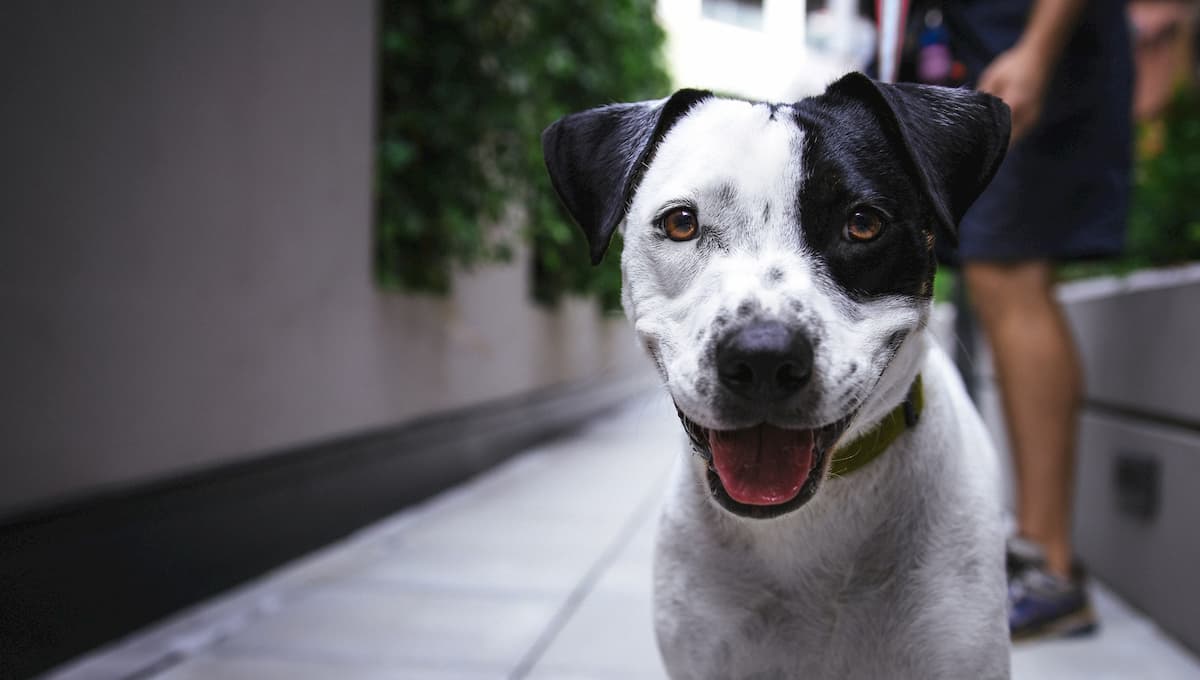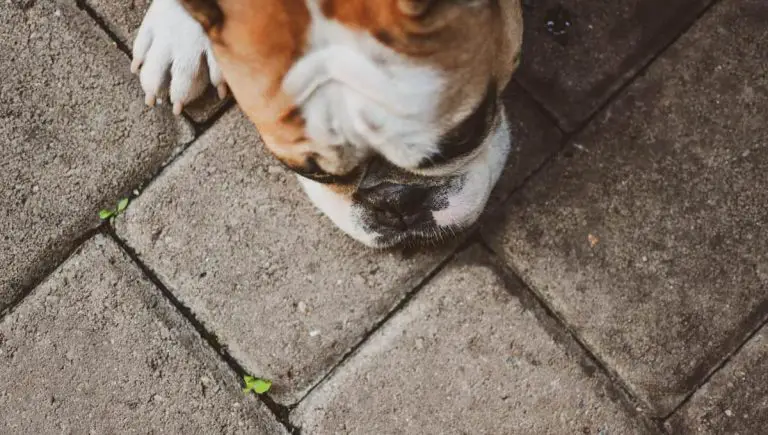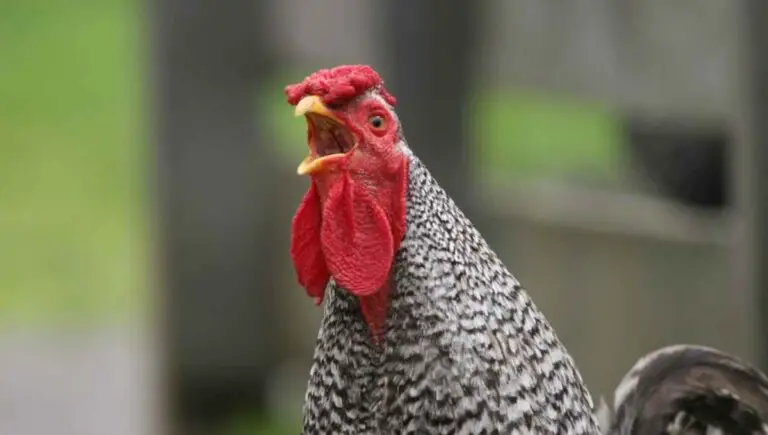How Long Can A Dog Go Without Peeing and Why They Shouldn’t Hold It

If you’re wondering how long can a dog go without peeing, then you’re either a new dog owner trying to understand your dog’s urinary habits, or you’ve noticed concerning patterns that may have emerged within your dog.
So, how long can a dog go without peeing? The average dog can go between six to eight hours before needing to pee. Dogs should be let out three to five times a day in order to relieve themselves. These figures may vary according to the dog’s size, breed, age, activity levels, and the presence of potential psychological factors.
While finding out the average length of time a dog can go without peeing is helpful, there are other important aspects you definitely need to be aware of as a responsible dog owner.
In sections below, we’re going to cover a wide range of topics relating to your dog’s bathroom breaks including: how long a dog can hold their pee, reasons for why your dog’s not peeing, and when you should seek out veterinary assistance.
How Often Should A Dog Urinate?
We’ve provided a rough estimate where on average, a dog shouldn’t hold their pee in for longer than six-to-eight hours. However, there are no golden rules. It’s essential to learn your dog’s habits early on while trying to housebreak them or after they’ve been adopted.
Younger dogs, older dogs, and certain breeds might need to urinate more frequently. Additionally, like it is with humans, pooches that drink more, urinate more too.
If you’re still learning your dog’s habits, it’s important to watch their body language. If they appear restless and agitated, it’s probably time to let them outside sooner rather than later.
How Long Can Puppies Hold Their Pee?
Puppies have smaller bladders, which means that they’ll require toilet breaks more often. A general rule of thumb is that the time a pup can go without peeing is calculated by their age in months plus one. For example, a two-month-old pooch should be taken outside to pee every three hours to prevent the inside of your home becoming their toilet.
So does that mean you’re in for wakeful nights for the foreseeable future? It depends on your dog. A tired pup can sleep for up to seven hours. However, you should prepare yourself for an early morning wake up call to prevent your carpets from being soiled! If you’re a deep sleeper and worried you won’t wake up to take out your dog, consider setting alarms.
Once your dog is fully housebroken, you won’t have to worry about early starts because they’re neat animals that don’t like to make a mess in the spaces where they sleep and relax.
Product Picks
- Worried about your pup making a mess in your home? This Dog Grass Pee Pad Potty makes housebreaking easier.
What Happens If A Dog Holds It Too Long?
Unlike humans who relieve themselves when nature calls, a dog can’t communicate their need to pee.
Trained dogs might wait until they’re let out, but as you might imagine, this is extremely uncomfortable for your pet and can lead to severe health complications if they don’t urinate as frequently as they should. At the same time, puppies that aren’t trained to pee outside regularly might become incontinent dogs who have accidents inside.
Common health issues that result from prolonged urinary retention include urinary tract infections, urinary stones, and as a worst-case scenario, being predisposed to carcinogens in the bladder, which could lead to cancer. If you suspect your canine is suffering from any of the above, seek out veterinary assistance immediately because these conditions could be life-threatening if left untreated. These issues will be looked at in further detail later on.
Is It Normal For A Dog Not to Pee For 24 Hours?
Just because dogs have larger bladders and can hold in their pee for longer doesn’t mean they should. If your pooch doesn’t pee for extended periods, he or she might be suffering from ill-health, or there might be psychological issues at play.
For example, recently adopted dogs might refuse to go because they’re adjusting to a new environment and a whirlwind of changes in their lives. They won’t feel comfortable to leave their mark until they feel safe.
While the average time is six-to-eight hours before having to pee, a pooch can last for 10 to 15 hours before it must go. However, this should not become a frequent occurrence because health issues might occur as a result.
Another reason for your dog not urinating often is also due to a change in environment. If you’re going on a trip and your four-legged family member joins you, he or she might be too anxious or excited by the myriad of new smells to eliminate. When taking a pit stop, encourage them to pee by taking them to a quiet spot with minimal distractions.
How Much Urine Can A Dog Bladder Hold?
The bladder of an average dog can hold up to 1.4 liters, with a pooch releasing 10-20 milliliters of urine for each pound of body weight per day.
However, this differs between different types of dogs. You might find that smaller breeds, such as chihuahuas and surprisingly, some larger breeds have smaller bladders which spell the need for more bathroom breaks.
This isn’t necessarily a cause for concern unless these bathroom breaks are accompanied by a struggle to urinate, a lighter stream than usual, or evident discomfort experienced by the dog.
Can Dogs Hold Their Pee Longer Than Humans?
The human bladder is between 16-24 ounces (around 300-400 milliliters), meaning that it fills ups in eight or nine hours. However, most people don’t usually wait that long because the feeling becomes extremely uncomfortable.
A dog’s bladder might be considerably larger than mans, but that shouldn’t mean you should let your dog hold their urine for extended periods when you’re at work either.
As mentioned before, puppies and older dogs will need to ablute often. With puppies, their bladders are smaller, and they tend to drink and eat more. Senior dogs, like humans, might need to visit the toilet more often to the point of experiencing urinary incontinence – a condition that comes with age but might be caused by other issues.
Product Picks
What Happens If A Dog Doesn’t Pee?
The dangers of a dog unable to pass urine can be fatal. Why? The bladder holds waste products, which is necessary for the normal and functioning of your dog. When a dog can’t pee, these toxins remain in the body, which may result in the death of your dog in a matter of days.
My Dog Can’t Pee or Struggles To Urinate Properly
Is it normal for a dog not to pee all day? There are few circumstances where a dog not taking regular bathroom breaks is normal and short-lived, such as a change in an environment that might cause them stress.
However, if that’s not the issue, a dog not peeing might point to a wide range of critical health problems which may include the following.
- Dehydration
A dog that won’t pee at all could point to a water imbalance in the body, whereby urine patterns may resultantly change.
Dehydration occurs in humans when fluids that are lost aren’t replaced, which is a condition that can also occur in our canine friends. Therefore, you should always leave water out for your dog, especially during summer.
Some pet owners worry about their animals over-hydrating, which isn’t something that often happens because most dogs know how to self regulate. If your dog is uncharacteristically thirsty and isn’t an active breed, you should take him or her for a checkup.
- Obstructions
One of the most common causes for an animal not being able to pass urine are blockages, resulting from urinary stones or crystals, tumour, and cancers.
Stones develop when minerals found in your dog’s urine clump together. These clumps don’t typically form in healthy dogs but are caused by underlying infections, a bad diet, infrequent urination and inadequate water intake. Therefore, one of the many dangers of a dog holding urine too long is urinary stones.
Urinary stones can lead to extremely slow and painful urination that causes strain, bloody urine, vomiting, abdominal and kidney pain, and fatigue. If your hound presents any or all of these symptoms, see the veterinarian immediately because this could seriously impact the wellbeing of your dog.
More severe issues that might be the cause of the obstruction are tumours that block the passage of urine or distended prostates in unneutered, older male dogs.
- Infections
Dogs can contract a bladder infection when bacteria spread from the genitals to the bladder. Signs that your pet may be in trouble include painful urination (your dog might appear distressed or whimper), urinating often but only a little each time, or battling incontinence.
When Should I Seek Out Medical Help to Treat Abnormal Urination?
You shouldn’t delay making an appointment with your local vet if your animal is showing visible signs of distress, discomfort and pain. Even if your animal isn’t displaying obvious symptoms, a change in urinary habits, urinating more or not at all, and strange urine colors could point to serious, underlying issues.
Your vet will confirm the problem with a series of diagnostic tests, including a urinalysis that assesses the chemical components of the urine, or x-rays to help identify obstructions like tumours and urinary stones, among other assessments.
Treatment may vary according to the nature and magnitude of the issue but may include surgery to remove obstructions, or antibiotics to eliminate an infection. Sometimes, a change in diet is prescribed to prevent the problems from recurring.
How Can You Promote Healthy Urination In Your Pets?
There are several ways you can keep your animals healthy by adopting the following measures, thus preventing emergency visits to the vet in the future.
Increase Bathroom Breaks
Encourage your pup to use the toilet by taking them into the garden more or going on frequent short walks around the neighbourhood. This is especially important for puppies in the process of being housetrained. If you own a young dog, you must establish a routine early as canines require it.
Encourage Them To Drink More Water
A well-hydrated dog is a healthy dog because it means he or she will pass urination more frequently, eliminating the harmful toxins harboured in your bladder.
If your dog refuses to drink, you might need to exercise them more to induce feelings of thirst.
Consider A Specialized Diet
Your dog might need a complete change of diet, especially if he or she is more susceptible to infections or stones. Your vet will recommend kibble that prevents these issues in the future.
Provide Your Animals With To The Backyard Or A Fresh Patch Of Grass For Young Puppies
Leave open a door that leads to your backyard. That way, your dog can use the bathroom without having to wait for you.
Dog potty grass can also be used, specifically for small dogs, giving them the space to relieve themselves when they need to.
Recap: How Long Can Dogs Hold Their Pee?
Dogs can hold their pee for six-to-eight hours generally. However, this depends on your dogs as patterns might vary according to the breed of dog, activity levels, age, and psychological factors. In this article, we’ve emphasised the following:
- Knowing how often your dog needs to pee requires watchful vigilance from you. A change in these patterns are severe and should prompt an urgent visit to the vet.
- We’ve looked at how age can influence how frequently dogs urinate, whereby healthy adult dogs pee less than puppies and senior dogs.
- How much pee can a dog hold? We’ve discussed that their large bladders can hold a significant amount of urine, but that should not mean they should hold onto it for long periods as this can have serious health implications.
- What happens if a dog doesn’t pee? Like humans, dogs suffer from UTIs and urinal stones if they don’t pass enough urine or any at all. A dog that refuses to pass urine for hours can prove life-threatening because the waste in your bladder remains there, releasing a harmful array of toxins, resulting in potential death.
- We’ve discussed the signs to watch out for that could be affecting your dog’s toilet habits, which may be distressing and uncomfortable for your dog but can be treated.
- We’ve stressed the importance of visiting the vet if your dog shows the above signs, they’re health depends on it.







